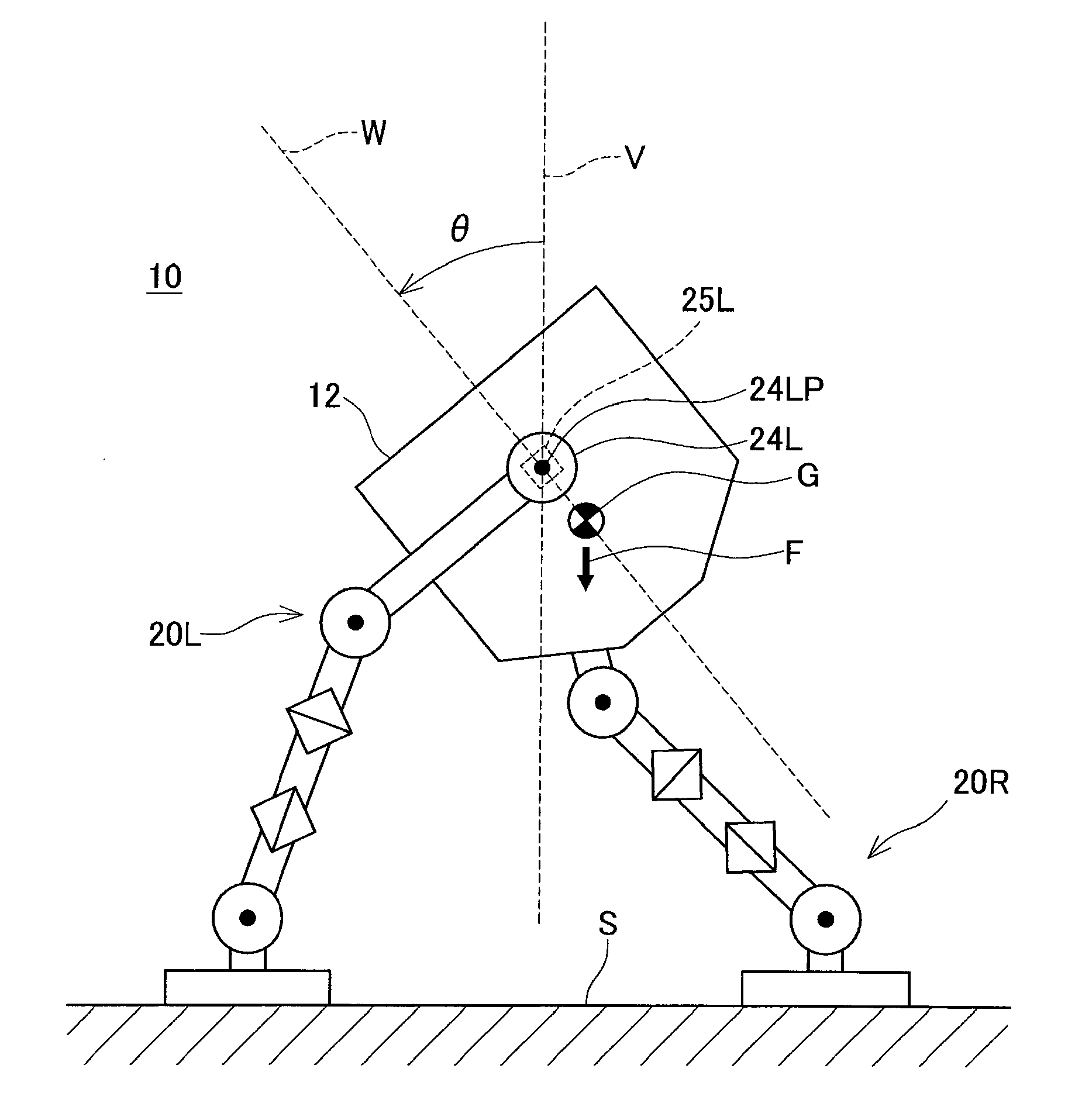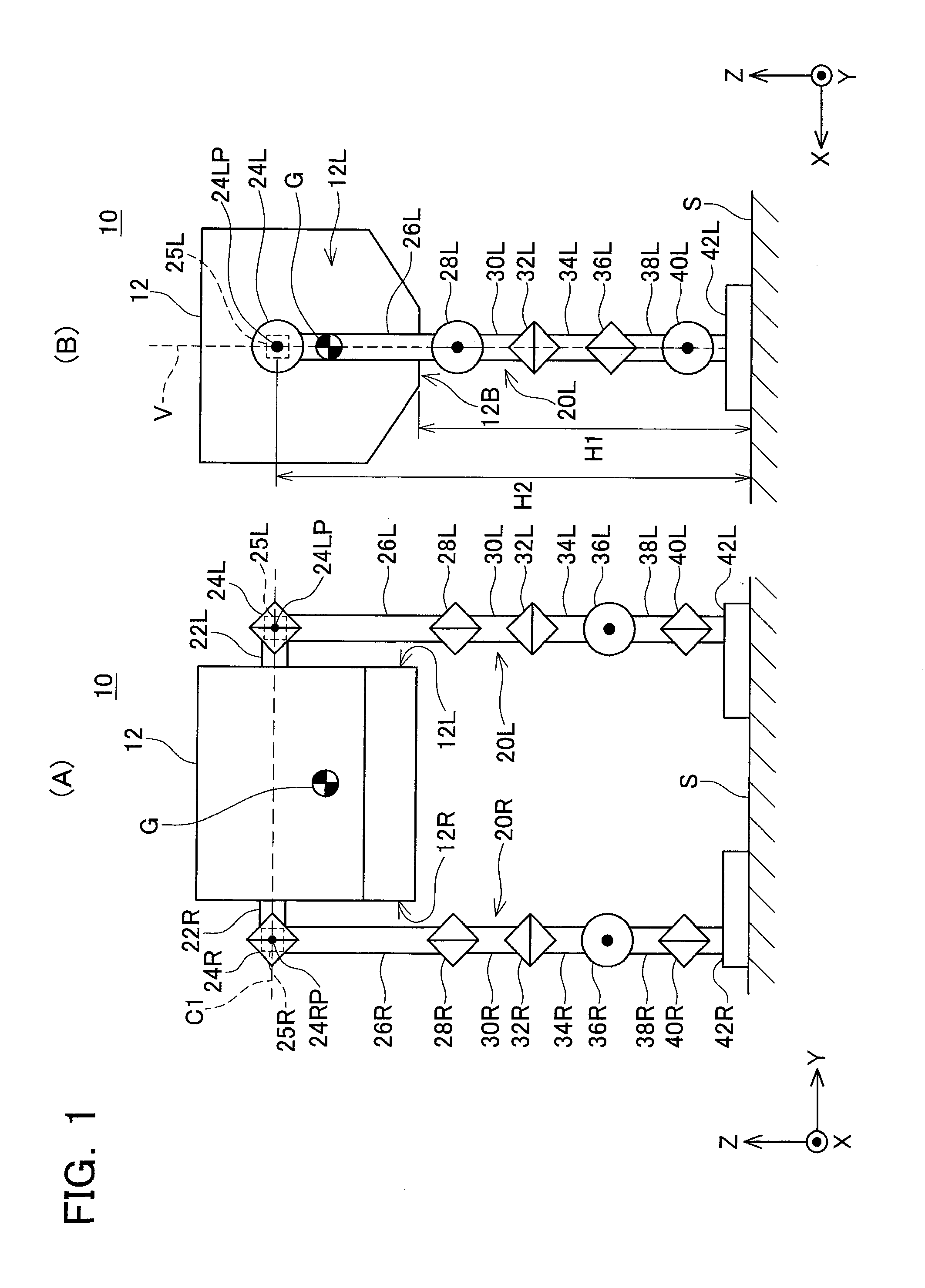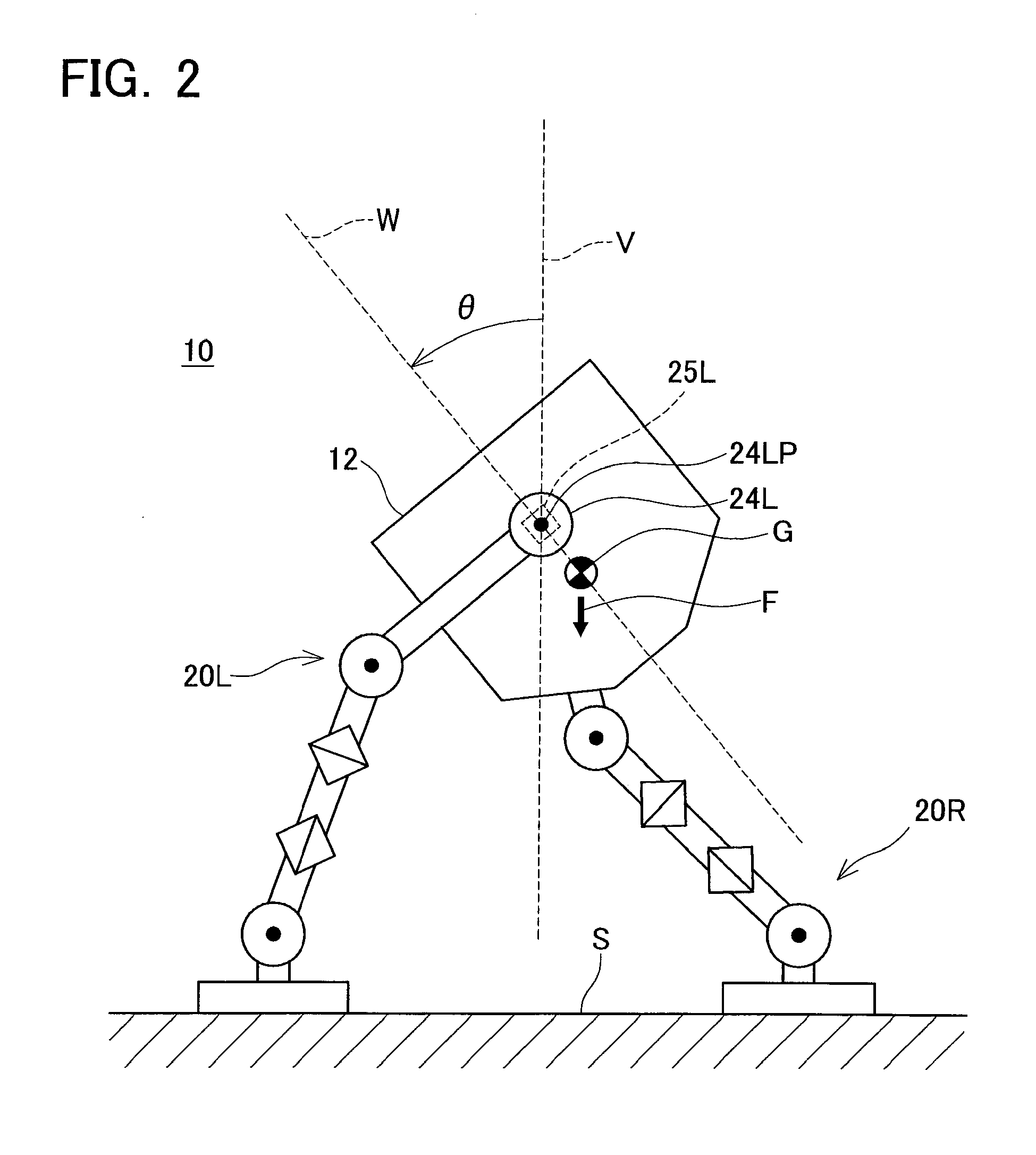Legged robot
a robot and trunk technology, applied in the field of legged robots, can solve the problems of prone to wobble of the trunk link, and achieve the effect of more stable trunk link
- Summary
- Abstract
- Description
- Claims
- Application Information
AI Technical Summary
Benefits of technology
Problems solved by technology
Method used
Image
Examples
first embodiment
[0044]A legged robot 10 according to a first embodiment of the present invention will now be described, with reference to the accompanying drawings. FIG. 1(A) is a front view of the legged robot 10, and FIG. 1(B) is a side view of the legged robot 10. Note that in FIG. 1(B), indication of those parts that are hidden by the parts in the foreground of the drawing is omitted.
[0045]The legged robot 10 has a trunk link 12 and a pair of legs (right leg 20R and left leg 20L). Each leg has a plurality of links and a plurality of joints, as will be described hereafter.
[0046]First of all, a coordinate system will be described. In FIGS. 1(A) and 1(B), an XYZ coordinate system constituting a right-handed orthogonal coordinate system is shown. The XYZ coordinate system is a coordinate system that has an origin fixed to the trunk link 12 of the legged robot 10. The X-axis extends forward from the trunk link 12, and is termed a “roll axis”. The Y-axis extends in the lateral direction of the trunk ...
second embodiment
[0067]A second embodiment of the present invention will now be described. FIG. 4 is a side view of a legged robot 110 according to the second embodiment. The legged robot 110 has, in the interior of the trunk link 112 thereof, a seat 114 on which a rider H sits. The external form of the trunk link 112 and the structure of the legs 20L and 20R in the legged robot 110 are the same as those in the legged robot 10 according to the first embodiment, and descriptions thereof are therefore omitted. Note that, in FIG. 4, the right leg 20R is located behind the left leg 20L and therefore is not shown.
[0068]In the legged robot 110, the rotation centers 24LP and 24RP of the first left joint 24L and the first right joint 24R, which are the uppermost pitch joints, are also located above the center of gravity G of the trunk link 112, as in the legged robot 10 according to the first embodiment. Note that the first right joint 24R and the rotation center 24RP thereof are not shown in FIG. 4. A seat...
third embodiment
[0071]A third embodiment of the present invention will now be described with reference to the accompanying drawings. FIG. 5 shows three views (a top view, a side view and a rear view) of a legged robot 210 according to the third embodiment. FIG. 5(A) is a top view of the legged robot 210, FIG. 5(B) is a side view of the legged robot 210, and FIG. 5(C) is a rear view of the legged robot 210.
[0072]The legged robot 210 has a trunk link 212 and a pair of legs (a left leg 220L and a right leg 220R). The bottom surface 212a of the trunk link 212 is provided with sliding joints 216L and 216R that correspond to the legs 220L and 220R, respectively. The sliding joints 216L and 216R slidably connect respective one ends 224La and 224Ra of the legs 220L and 220R to the trunk link 212.
[0073]The structure of the left leg 220L will now be described. The left leg 220L has a plurality of links 221L, 222L, 224L, a plurality of rotary joints 230L, 232L, 234L, 236L, and a sliding joint 216L. The first ...
PUM
 Login to View More
Login to View More Abstract
Description
Claims
Application Information
 Login to View More
Login to View More - R&D
- Intellectual Property
- Life Sciences
- Materials
- Tech Scout
- Unparalleled Data Quality
- Higher Quality Content
- 60% Fewer Hallucinations
Browse by: Latest US Patents, China's latest patents, Technical Efficacy Thesaurus, Application Domain, Technology Topic, Popular Technical Reports.
© 2025 PatSnap. All rights reserved.Legal|Privacy policy|Modern Slavery Act Transparency Statement|Sitemap|About US| Contact US: help@patsnap.com



